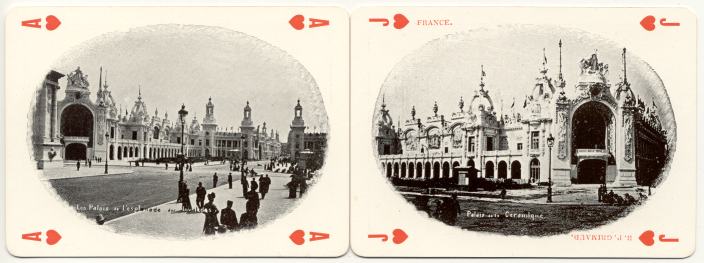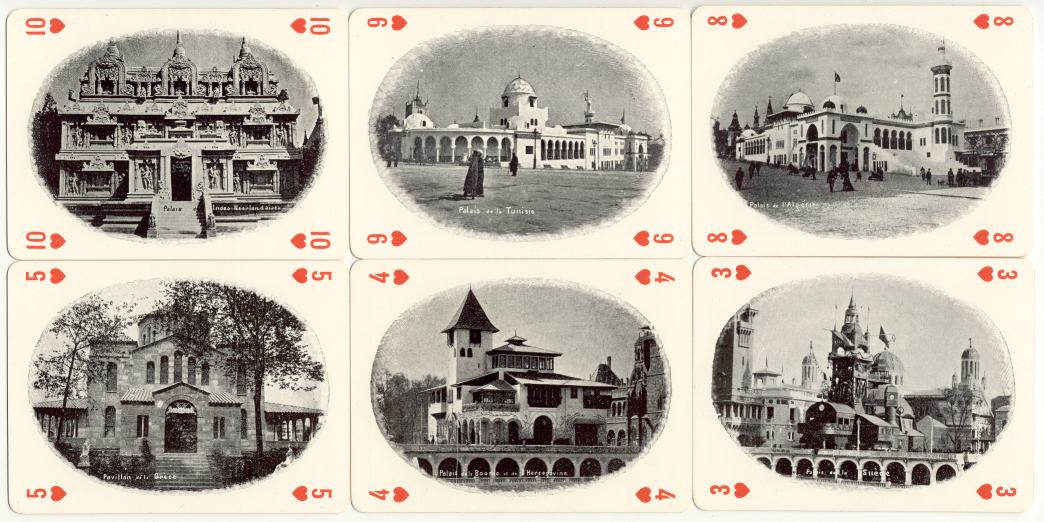
The Hungarian Palace and the Transvaal Palace
PARIS WORLD EXPOSITION 1900
-4-
On the opening day, 14th April, 1900, the building work was not yet complete. Not until June were the visitors able to experience the exposition in its final form.

The
Hungarian Palace and the Transvaal Palace
The exposition's exhibits were divided into 18 subject areas and 121 categories. For the first time at a world exposition, education and teaching from childhood through to scientific theory constituted the first subject area, with art as the second subject area. Means and devices employed in the sciences and the arts - from artistic and photographic techniques, a giant telescope which proved a popular attraction, musical instruments, maps and geographic equipment, medical and surgical devices through to stage equipment - followed as the third group.

The
Palaces on the forecourt of the Invalides and the Palace of Ceramics
The next subject areas were dedicated to the three
technical fields of mechanics, electricity and engineering and transport.
Electrical engineering was celebrated as the "lifeblood" of the
exposition, providing light, power and movement. It was rendering industrial
manufacturing increasingly more efficient and economical, making transport
faster and more effective, and had expanded the available means of
communication. The technical field was followed by eight groups involving
branches of trade and commerce, such as agriculture, horticulture, forestry and
the food industry, metallurgy, decoration and furnishings, the textile and
clothing industry, the chemical industry and other branches of industry. The 18
groups were completed by social policy, colonization and defense.

Above: the Belgian
Palace, the Palace of Monaco and the Danish Palace.

Top row: the Dutch-Indies Palace, the Tunesian Palace and the
Algerian Palace.
Bottom row: the Greek Pavillion, the Palace of Bosnia-Herzegovina
and the Swedish Palace
This array of groups clearly shows that the exposition was no longer a purely industrial exhibition, but had become a general cultural exhibition at which virtually all areas of human life were to be represented. Here it was possible to become seasick on an ocean steamer - a rocking ship's deck, surrounded by a 750 meters long panoramic canvas which unrolled to great effect. And a few minutes later, one transferred without further ado to the Trans-Siberian railway - a wagon between the Russian and Chinese pavilions. Within a few minutes, the window of this wagon offered views of magnificent landscapes, arranged in four prospects.
Exhibits: 83,047,
including 38,253 from France
Foreign participating states: 43
French colonies: 20